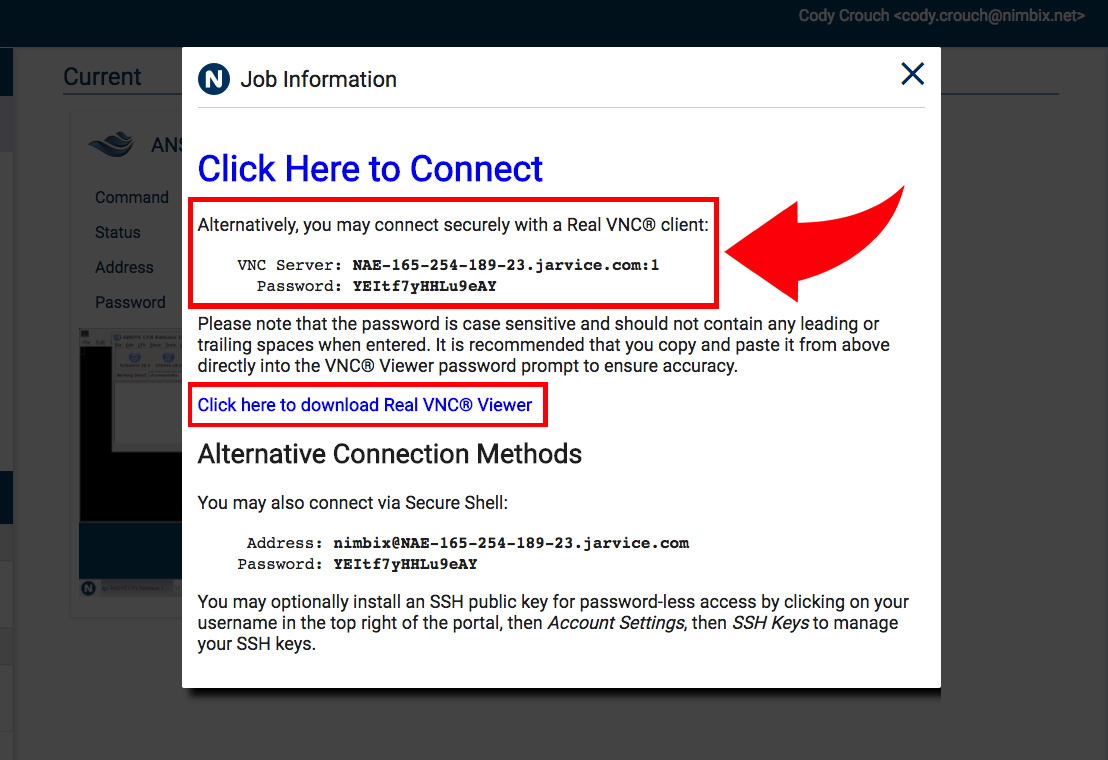

- #Vnc connect to current session software#
- #Vnc connect to current session password#
- #Vnc connect to current session download#
- #Vnc connect to current session mac#
Most VNC clients other than the TightVNC Java Viewer do not have the ability to set up an SSH tunnel. This section is published under the “you break it, you get to keep both pieces” license. We provide this information for those adventurous and/or foolhardy enough to venture out on their own. The easy way to avoid this problem is to not do that.Īppendix 1: Connecting Using a Different ClientĮCE Computing does not offer support for this. Note: things will be more complicated if you have started VNC server sessions on multiple hosts. Then, return to the top of the page to start a new server.
#Vnc connect to current session password#
This will wipe out any saved password for the VNC session: $ cd $ pwd / homes / nemoĪnd to be really sure nothing is running… $ pkill - u $USER Xvnc If You Need to Reset Your VNC Session PasswordĬlose any VNC sessions as in the previous section, then delete the vnc password file. X DISPLAY # PROCESS ID : 2 11720 $ vncserver - kill : 2 Killing Xvnc process ID 11720 $ vncserver - list TigerVNC server sessions : Then, run vncserver -kill to quit any sessions which need not remain open (note that you do not add 5900 in this case – use the exact display number reported). IMPORTANT: Close Your VNC Session When Finished!įrom the command line on the remote machine, use the vncserver -list command to determine the display number of your VNC session. If you see a blank window, be patient for a bit – but if it continues to be blank, end the current session and try starting over again using a different Linux Lab machine – the one you chose may already be bogged down with too many other users. There may be somewhat of a delay, but after all this you should soon see a new VNC window containing a Linux desktop session.

The next prompt will ask for the VNC password you chose when you set up the VNC session. First, you will need to provide your UW NetID password.
#Vnc connect to current session software#
The ECE Linux Lab machines require you forward your VNC session over SSH, which is why we only support use of the TightVNC Java Viewer – that software can manage SSH forwarding automatically. With your VNC session now running, you can now connect to that hostname and port number using TightVNC. If it tells you the display is “:3”, you’d need to use port 5903 and so on. VNC ports start at 5900 – so when TigerVNC refers to “Display :2”, the port number VNC maps to that display is 5900 + 2 = 5902.
#Vnc connect to current session mac#
The Mac has one built-in – it’s located at Applications -> Utilities -> Terminal.
#Vnc connect to current session download#
Be sure you download the Java Viewer from that page, not the Windows version or anything else. The VNC software unfortunately does not appear to be compatible with other Java engines. The following software is required – it works on both Windows and macOS: VNC sessions will not start if your account is over the disk quota. The ECE Linux Lab systems have VNC software installed. VNC ( Virtual Network Computing) allows graphical programs to be run remotely with the ability to reconnect to that session should the network connection fail.


 0 kommentar(er)
0 kommentar(er)
